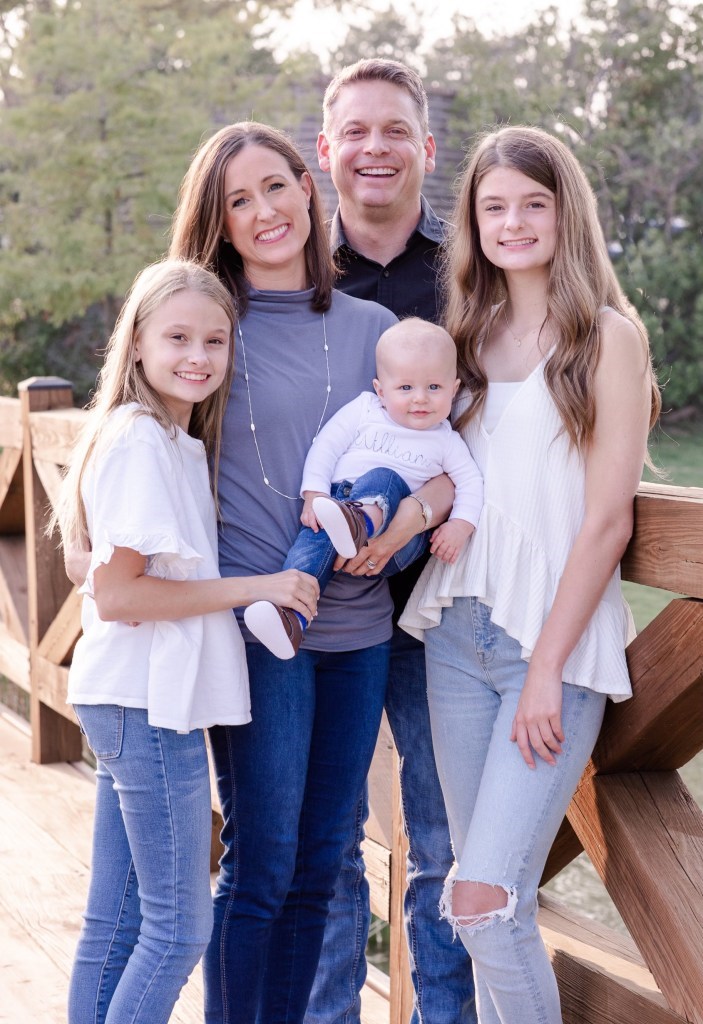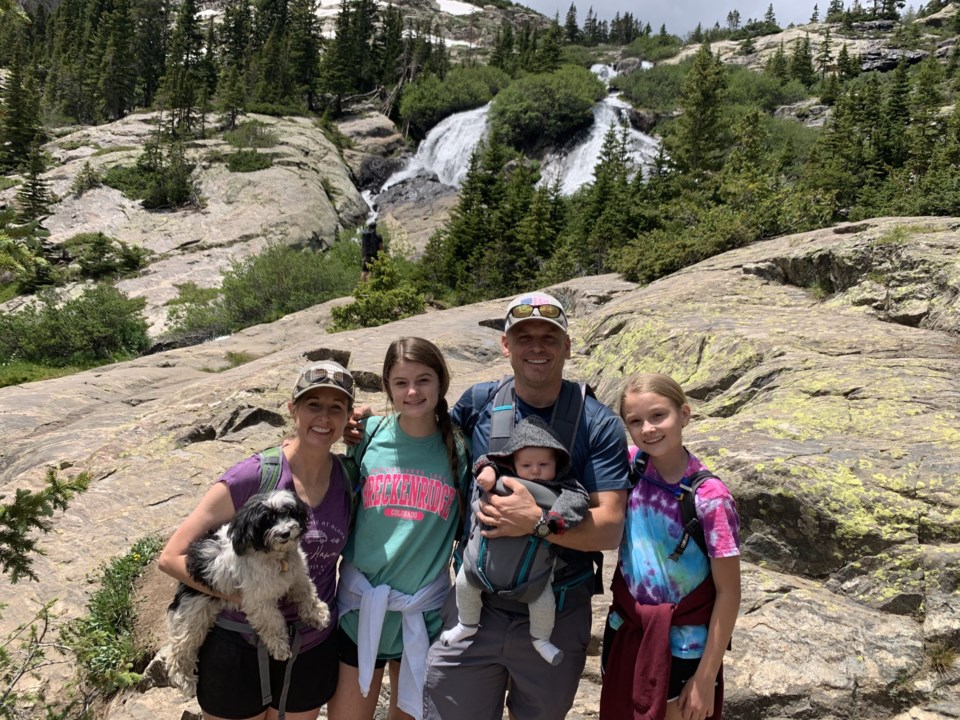What started out as a routine check-up turned into a complete nightmare.
“She said, ‘I think there must have been some kind of mistake on the lab work. We need you to run it again,’” Dr. Kimberly Gronberg recalls an endocrinologist telling her, regarding her daughter’s blood work. “And then they ran it again and said, ‘Okay, this is not a mistake.’”
On Dec. 12, 2020, doctors diagnosed Audrey Gronberg, a 13-year-old from Highland Village and seventh-grader at Briarhill Middle School, with a life-threatening condition — aplastic anemia.
Audrey never had symptoms. Her only warning sign was a small, seemingly innocuous rash that showed up about a week before her diagnosis.
“She had one little place on her skin that she had said, ‘Mom, what do you think this is?’ And I thought, well, maybe it's a little bit of a rash or something,” Gronberg said. “Now we know what that was — it’s called petechial. And that means that her platelets had gotten so low that she was starting to bleed a little bit under her skin.”
Audrey is now in need of a match for a life-saving bone marrow transplant — a search that spans across the entire U.S. and worldwide.
What is aplastic anemia?
Aplastic anemia causes bone marrow failure, according to Johns Hopkins Medicine. Bone marrow is tissue in the bones that produces red blood cells, white blood cells and platelets, which are vital for supplying oxygen to the body, clotting blood, and fighting infections.
Normal bone marrow replaces old blood cells as they die off. But the bone marrow in someone who has aplastic anemia does not produce new cells. This makes them vulnerable to infections and bleeding, according to Johns Hopkins Medicine.
Aplastic anemia is also an extremely rare condition — it only occurs in one to two people per million every year, which is equivalent to just 300 to 600 new cases each year in the U.S., according to St. Jude Children’s Research Hospital.
The death rate of aplastic anemia, if it goes untreated, is very high at about 70% within one year, according to St. Jude Children’s Research Hospital. Out of all of the treatment options, a bone marrow transplant is the only one that could possibly cure someone with aplastic anemia for life. And the long-term survival rate for children with the condition who have a bone marrow transplant is over 90%.

How you can help
On Jan. 9, five of Gronberg’s friends organized a drive-thru bone marrow registry to help find a match for Audrey. One of the organizers, Amanda Hutchinson, said 334 people came to the drive-thru, and about 70 people registered online to mail in their tests on the National Marrow Donor Program’s Be The Match registry because of Audrey.
Tamara Lisby, one of the other organizers, attributes the large turnout to everything the Gronbergs do for the community.
“We had no idea we would get that many people to participate in this event,” Lisby said. “But it is purely because of the Gronbergs. The Gronbergs have spent as many years as I've known them giving back to this community.”
But despite Saturday’s turnout, statistically speaking, the more people registered, the better. Hutchinson said for every 430 registered donors, there will be a match for someone. While it may not be a match for Audrey, someone else’s life could be saved.
“We know that it's very slim that we got a match for Audrey on Saturday,” Lisby said. “But the Gronbergs will share the sentiment with me that if we could have on Saturday maybe found a match for somebody, it would be amazing.”
The process to register as a bone marrow donor takes about 10 minutes. It consists of online questions and a cheek swab, Hutchinson said. If a registered donor matches with someone, doctors will contact them, but it could be weeks, months or even years later.
“It’s not too late for anybody to register to be a match, and [people] can still go online and have kits mailed to them,” Lisby said. “It's super easy and quick and painless.”
Hope for the future
The difficult journey doesn't end even when a match is found, Gronberg said. Before the transplant, Audrey will undergo chemotherapy and possibly radiation.
“You do have to go through tough days ahead of time when they kind of have to take your body down to nothing,” Gronberg said. “You're sick, and you lose your hair and all of that because of the medicine they have to give you in preparation for the bone marrow transplant.”
After the bone marrow transplant, Audrey will have to stay in the hospital for a couple of months and won’t be able to go outside, Gronberg said. Once she leaves the hospital, she will still have to stay very isolated for about one to two months while her body works on building up the blood cells she needs to fight infections.
But despite it all, Gronberg said Audrey is maintaining a positive mindset while she waits for her bone marrow match and transplant.
“We're just trying to take everything one day at a time and stay really positive and just try to stay healthy — mind, body and spirit,” Gronberg said. “I know she's had some tough days for sure, but overall she's been really strong.”
Register as a bone marrow donor at join.bethematch.org/audrey. Text AUDREY to 61474 to order a mailed test kit.
Hutchinson said Be The Match is also looking for businesses to host the next event in the area. To host a pick-up or drop-off location for the next Be The Match event, contact Tressa Malone at [email protected] or 972-333-4906.




